

|
Microbial Growth Website |
|
IBERS: Institute of Biological, Environmental and Rural Sciences |



|
Counting the Colonies |
|
Use your browsers previous page button to return to the Plate Counting page. Figure 4a: The incubated agar plates have different numbers of colonies on them depending on the dilution of the sample. |
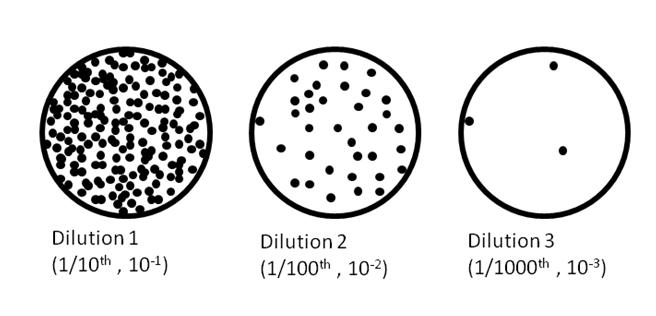
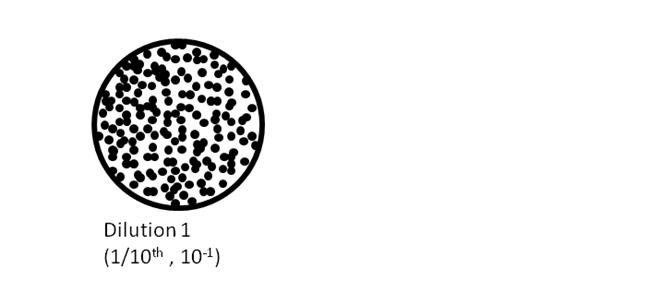
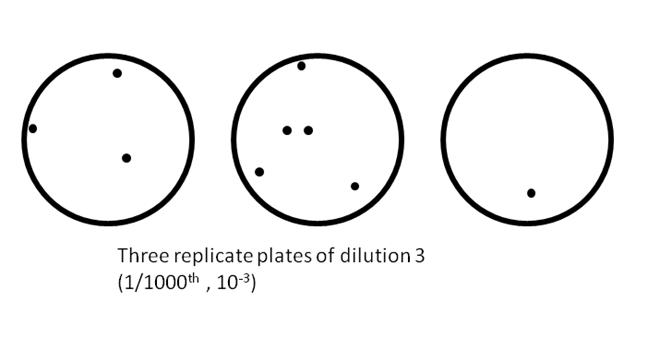
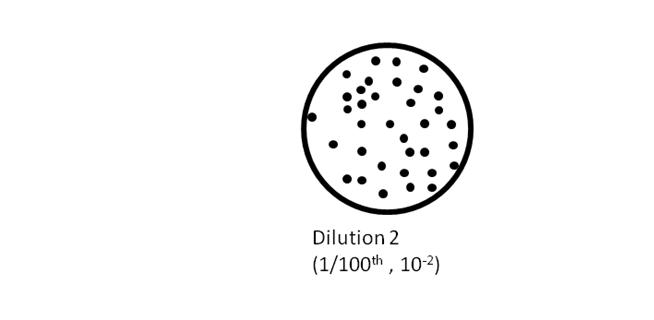
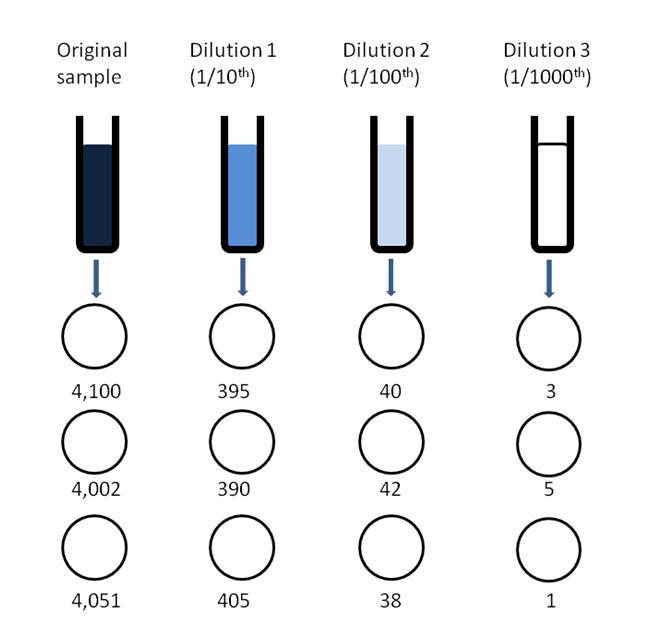
|
Figure 4b: If there are too many colonies on a plate it can be very difficult or impossible to count them. On very crowded plates many of the colonies will be overlapped making it hard to see if there is a single colony or multiple ones at a given position. |
|
Figure 4c: If there are only a small number of colonies on a plate it is easy to count them but the results are prone to error. |
|
Figure 4d: Counting plates with between 30 and 300 colonies is a good compromise between too few and too many colonies. |
|
Figure 4e: The number of colonies on each replicate plate at each of the dilutions is recorded. The dilution where the number of colonies per plate was between 30 and 300 is selected for the calculations. In this case dilution 2 (the 1/100th or 10-2 dilution of the original sample) is the one to use. The three replicate plates at this dilution give an average number of colonies per plate of 40 which is the value to use to back-calculate the concentration of cells in the original sample. 40 colonies per plate means that 0.1ml of dilution 2 contains 40 viable cells (on average). |
|
Use your browsers previous page button to return to the Plate Counting page. |